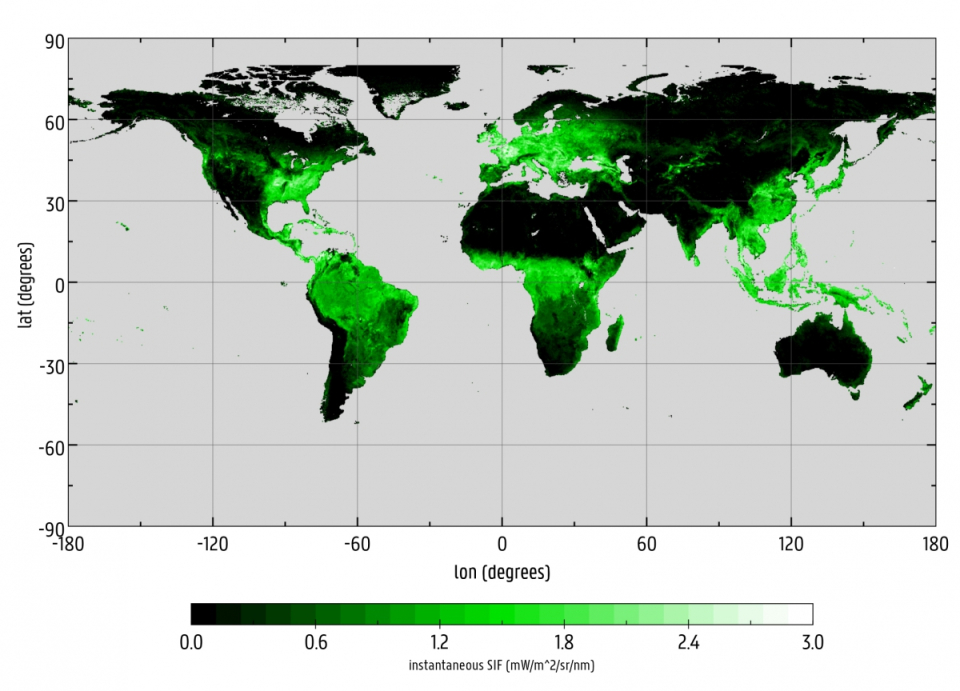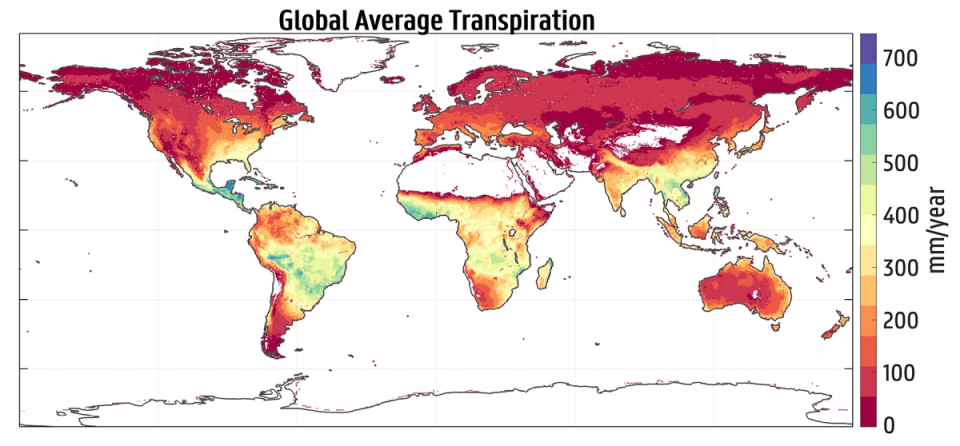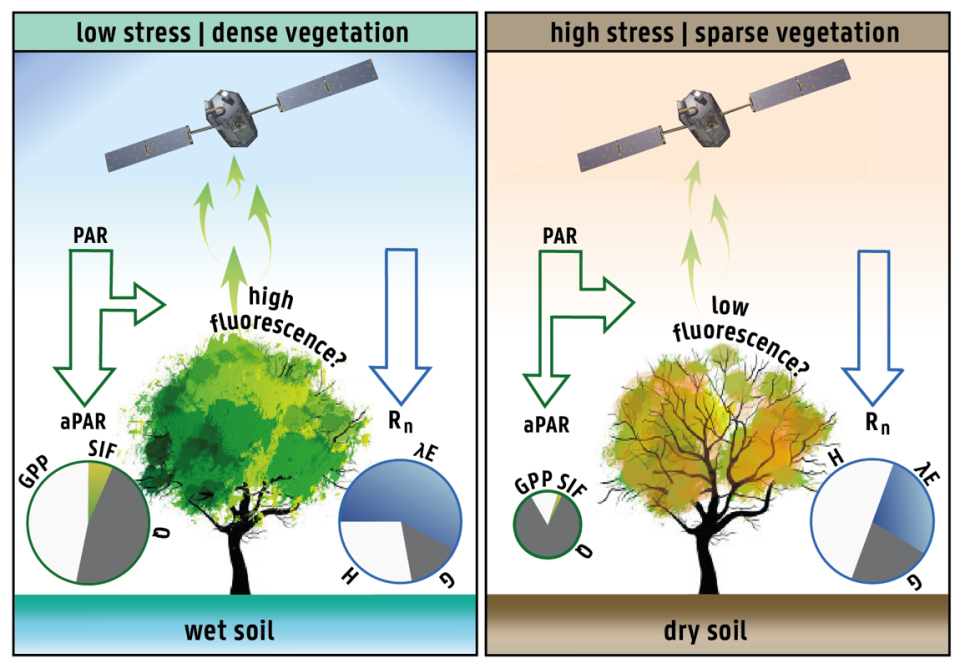Context and objectives
In recent years, satellite observations of Solar-Induced chlorophyll Fluorescence (SIF) have been used to derive photosynthetic activity. Given that photosynthesis and transpiration are synchronized through the opening and closing of the stomata, we hypothesise that SIF data may be valuable to diagnose ecosystem transpiration. Here we propose to exploit the potential SIF observations to derive vegetation stress, and transpiration.
Objectives:
- To show the potential of SIF to reflect vegetation stress in relation to transpiration.
- To conform a dataset of transpiration and drought stress incorporating SIF.
Project outcome
Scientific results
We showed unequivocally that SIF and transpiration are closely empirically related. Findings showed that the best way to estimate vegetation stress from eddy-covariance data is based on a radiation-based or Priestley and Taylor framework for estimating potential evaporation, calibrated per biome. SIF/PAR can successfully be used to assess this vegetation stress, outperforming complex land surface models. Based on this SIF-based vegetation stress product, global maps of transpiration were achieved through direct estimation of transpiration as well as from assimilation in GLEAM, although the performance of the latter requires further investigation.
Societal (including environmental) relevance
Transpiration is the largest terrestrial water flow globally, even exceeding water flow in rivers in total volume.
At the local scale, a correct assessment of transpiration is crucial for water management and agriculture. At the large-scale transpiration also influences weather and climate patterns. Only now, we are starting to understand the extent to which transpiration dynamics affect drought and heat events.
Products and Services
In this exploration project, the main focus was on building the scientific background of the relationship between SIF and transpiration or vegetation stress. In the near future, a new high-resolution version of GLEAM will be developed and made available that incorporates the insights of the project.
Potential Users
Potential users of GLEAM involve both researchers worldwide studying global and local hydrology, but also agricultural agents and local governments requiring high-resolution data of ecosystem water use.
Outreach
STR3S: Fluorescence to better understand transpiration
STR3S: Fluorescentie voor een beter begrip van transpiratie
STR3S : La fluorescence pour mieux comprendre la transpiration
| Project leader(s): | UGent - Hydro-Climate Extremes Lab (H-CEL) | |||||
| Belgian partner(s) |
|
|||||
| International partner(s) |
|
|||||
| Location: |
Global Region:
|
|||||
| Related presentations: | ||||||
| Related publications: | ||||||
| Website: | http://www.str3s.org/ | |||||



